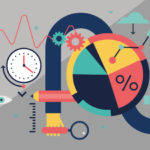Companies are facing the challenge of correctly interpreting information to create valid patterns they can apply to their businesses.

The people following the Democrat Hillary Clinton and the Republican Donald Trump were closely examined during the last U.S. election campaign.
Both campaigns’ communication teams exploited Twitter’s analytics to find out the name and address of the followers and if their profile had a picture, determine their sex, age, and ethnicity. All this with the goal of personalizing each Twitter account as much as possible in order to get closer to voters or take steps to win their vote. This data is highly valuable for political campaigns or any advertising company.
There were no big surprises: in terms of gender, the candidates had about the same number of followers, and Hillary had significantly more Latino followers than the current U.S. President.
Susanna Pirttikangas - Senior Researcher at Oulu University who participated in the Machine Learning event organized by BigMl and Barrabés in Madrid - maintains that the problem was that the model determined that Clinton’s followers had a lower social status than Trump’s followers.
To create this pattern it was determined that people with more followers on Twitter have a higher social status. “This conclusion caught my attention and that’s why I think a certain responsibility comes with interpreting data. Companies have to be responsible and need to create accurate models to define patterns. If the models are not correct, the results may not be true or could have some sort of discrimination. It can completely lead you astray so that you focus on the wrong audience,” explained Pirttikangas.
The second pillar the researcher stressed to get the most out of data is confidence. The data scientist works at the Oulu University, which is based in a city known as the polar Silicon Valley with a population of nearly 200,000 people. She offered the example of a university project to create a smart city. “We don’t settle for data from a single source. We want to combine them all,” she noted.
To do so, they created a model with data provided by different companies. On the one hand, they used geolocation devices to find out the speed and distance between vehicles, and on the other, they partnered with a meteorology company to obtain information on the weather.
Finding out the meteorological forecast allowed them to know if the ground was slippery, for example, crucial information to avoid accidents as it enables the calculation of the correct distance between vehicles to avoid crashes. “It’s good to experiment. In this case, you see the business opportunities of two companies that share data to create devices that help with driving,” she indicated.
Experts stressed that correct predictions are made if data is shared. Pirttikangas encouraged companies to have the confidence to participate in joint projects where information is combined to bring benefits to society, as well as business models and opportunities for them.
Regarding big data, Pirttikangas underscored the potential of its variety, speed and volume. “10 years ago we weren’t able to interpret data in real time. Now we can and we need to take advantage of it.” The challenge, the expert says, is “dealing with the variety. How should we analyze all the information to exploit data from the Internet of Things?” she asked.
The key is the mixture of responsibility and confidence, which leads to quality, Pirttikangas says. The three pillars of a model to interpret data correctly.